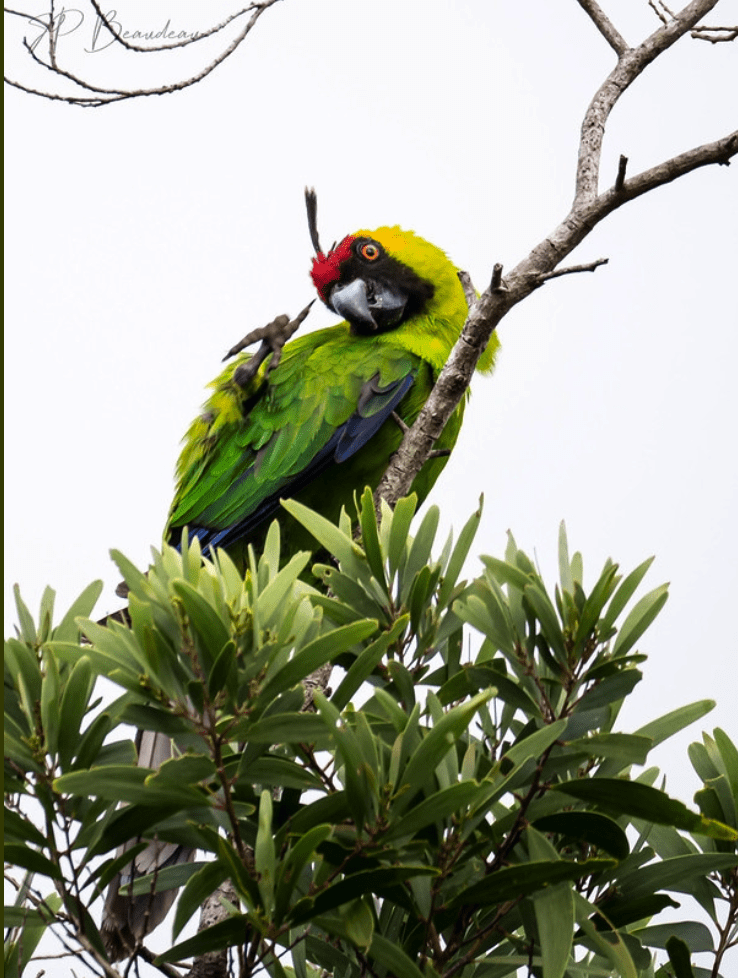The Horned Parakeet, Eunymphicus cornutus, is at risk from habitat degradation and introduced mammals and disease.
In 2002, the WPT funded part of a long-term study to map the distribution and abundance of the Horned Parakeet. Surveys continue in a long-term effort to protect the species, which is fully protected by New Caledonian law. There appeared to be robust populations in Rivière Bleue and Reserve Speciale de Faune et de Flore de la Nodela. Further actions proposed included monitoring possible trade, researching breeding biology and controlling introduced predators. It was also suggested to increase the area of suitable habitat that has been protected and establish captive-breeding populations for future reintroductions.
Status: IUCN Vulnerable / CITES Appendix l
Population: 7934-9445
Range: New Caledonia, Melanesia
Natural history: The Horned Parakeet is found mainly above 450 m (1476 ft) in humid indigenous forests, secondary growth and savanna woodland. They also occur in mixed Araucaria forest, feeding on flowers, nuts, fruits, berries, seeds of trees and shrubs, and ripe pawpaw. They are wary, unapproachable and generally seen in pairs and small groups of up to 10 birds. Birds roost in the treetops or tree hollows, becoming active an hour before sunrise.

